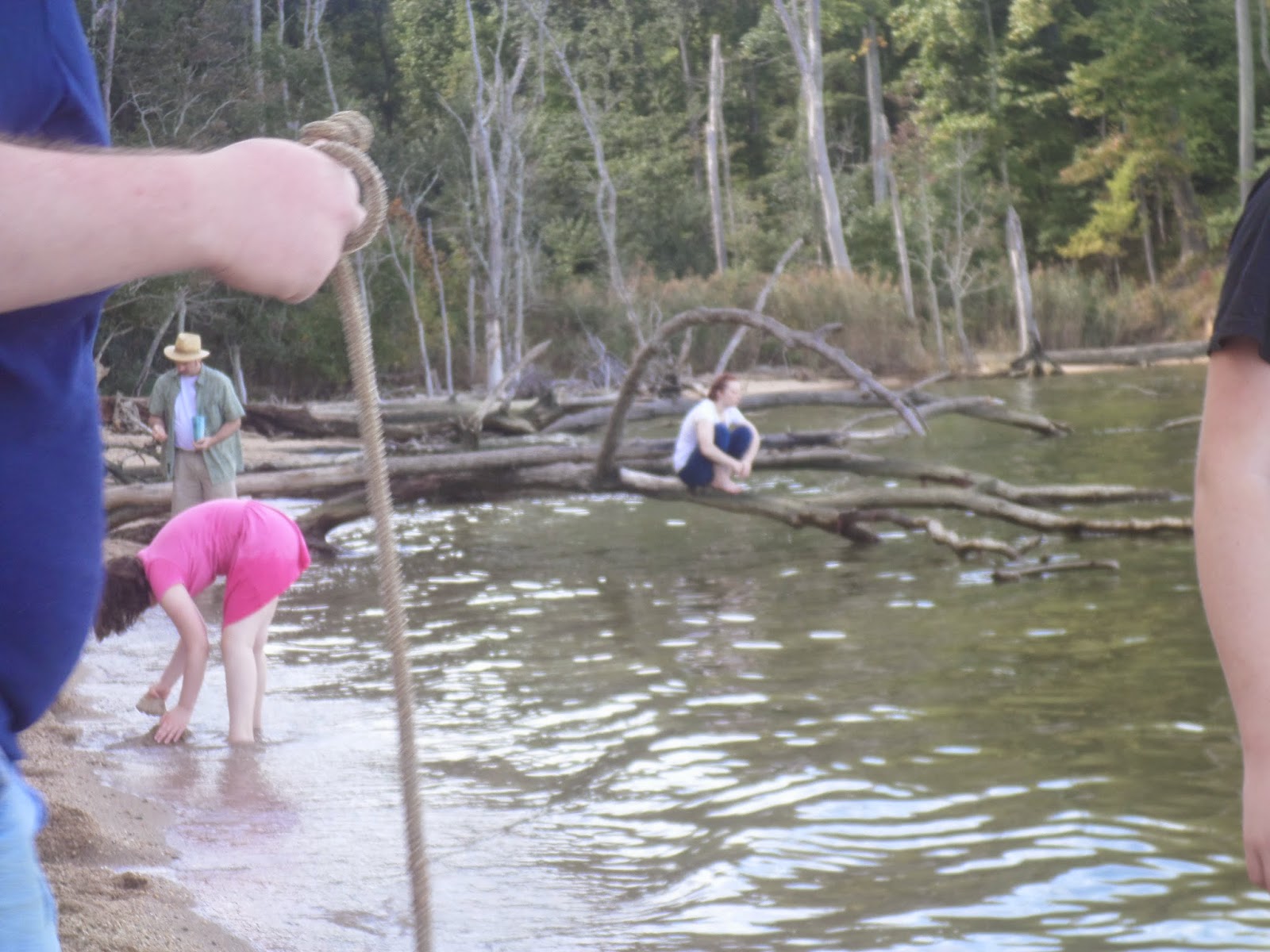[This recent post from The Imaginative Conservative,
Men in Hats: An Endangered Species, reminded me of a
post I wrote in the spring of 2007 about my husband's hats. He still has the tweed driving cap and wears it in cool weather, but the others have had to be replaced.]
Over at Favorite Apron talk has turned to
hats for men, and it inspired me to set off again in search of information on the proper wearing of hats, no easy task.
After wearing a hat to work every day for nearly twenty-two years in the Air Force, Mike wanted me to get him something to wear to the office where he works as a civilian in his retirement (hah!) and of course he needs something on when working out in the sun around here.
This latter was easy enough to find - we bought this leather one, which is especially nice for cool damp weather, at the local feed store.
And this one that he wears in warmer weather, was practically a no-brainer:
Notice that neither of these hats is a cowboy hat, which would have been by far the easiest thing to find. They are everywhere - the feed store, the Tractor Supply Store, Wal-Mart, gas stations, the mall...
everywhere. But Mike doesn't own a single pair of cowboy boots, and since we own neither cows nor horses it's not likely that he'll ever own a pair. It's my opinion that man's hat (well, probably a woman's too for that matter, but we're talking about men's hats here) ought to go with his shoes, and his shoes ought to be appropriate to the activity at hand. Mike usually does his farm work in the rubber boots you see here, or in a pair of leather military issue boots, and the straw farm and leather outback hats seemed to be more fitting than anything else I've seen.
A harder task was finding something for him to wear to the office, and this is where I first started trying to find out what the etiquette is for what kind of hat to wear where. There's some information on proper behavior when wearing a hat - taking it off in church, for instance - but precious little about different
kinds of hats and when and where it's appropriate to wear them.
My 1950s copy of Emily Post's
Blue Book of Social Usage is not very helpful since not only is our lifestyle not formal, but we don't even live in a formal era. I'm not opposed to moving slightly in the direction of more formality, hoisting the culture up so to speak, but I certainly don't want my husband to look ridiculous - like he's in a costume or something. He doesn't even own a suit, so whatever hat I chose for him needed to be dressier than his farm hat, but still informal.
I don't have a photo of the first "office" hat I bought for him, but it was a straw hat along the lines of the one above, but smaller in scale - a narrower brim and such. For the fall, I finally hit upon this wool tweed
driving cap:
Nice, isn't it?
His office "suit" is usually an oxford-cloth shirt (sometimes flannel as you see above), trousers, and burgundy oxfords or brown loafers, with a sweater (pullover or cardigan) in cool weather. Casualish, but nice.
But now it's spring again and I was still dissatisfied with his old warm-weather office hat, not to mention the fact that it was falling apart, being a pretty cheap thing, so I've been looking around again, asking the questions, What is the right style? and What is the right material?
My daddy never wore hats, but I remembered something he told me about my grandfather. Granddaddy was an engineer (that is, he drove a train) and a farmer, so he usually wore his pinstriped overalls and engineers cap, and boots, but he was also the mayor his small town for many years, and of course, the men of that generation always wore a suit to church. Daddy told me that Granddaddy had four dress hats: two felt ones (a black and a grey) for winter, and two straw ones (a black and an ivory) for summer.
So, armed with this information, I set off hunting for some kind of dress hat in straw. My mental image was of Bogart - a fedora of some sort. It took a lot of googling around, but I finally found something I really like - a Panama.
I chose this putty color over either black or ivory, thinking that those colors would be too formal.
Well. Another time, maybe I'll discuss actual hat etiquette - from an historical perspective, at least. There seem to be only about three rules for wearing hats nowadays, but I'm in favor of moving in a slightly more formal direction, and there's no reason to reinvent the wheel, now is there?














